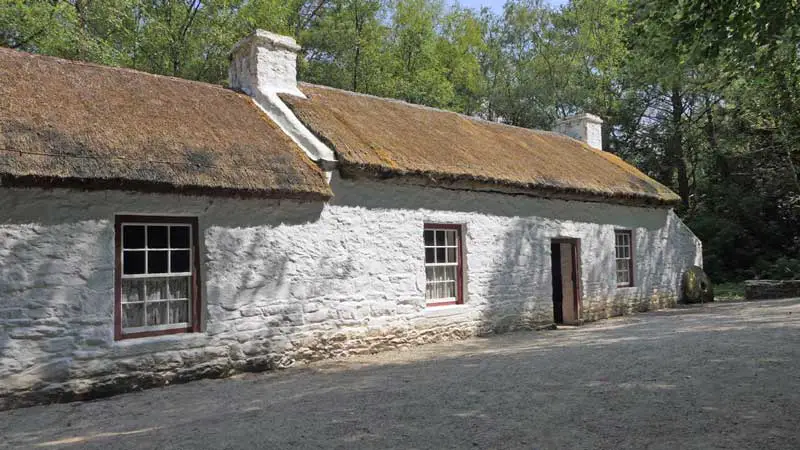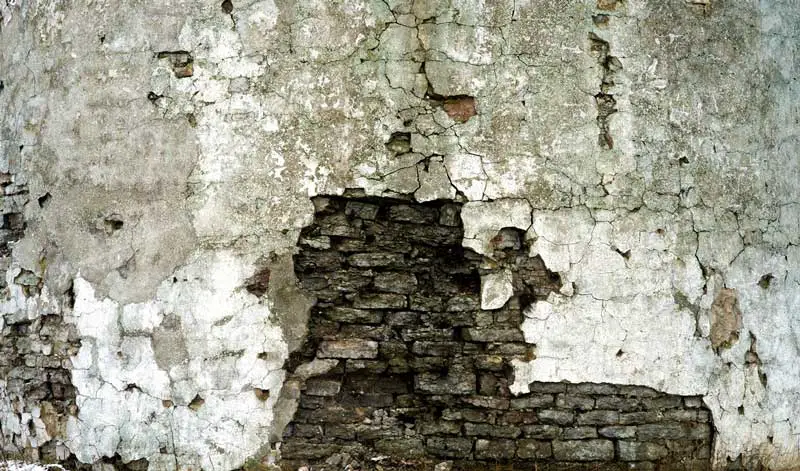
It can be difficult to find good information on what paints can be used with lime plaster. In this article, we will be looking into what characteristics paints need to have to be appropriate for use on lime plasters. Lime plasters and renders, when used correctly, add a beautiful finishing touch to walls and ceilings, they can be left as is or they can be painted. But should you seal lime plasters and renders?
Lime plaster, render or even mortar should not be sealed. Lime plasters are a breathable building material, they help control moisture within your building, and sealing them would disrupt this. Sealing lime plasters can lead to extensive damage to the plaster and substrate that they have been applied to. If lime plasters or renders have been sealed, trapped water can cause damp patches and even begin weakening the walls that the plasters have been applied to.
Whilst not sealing plasters and renders may seem a bit counterintuitive, allowing building materials such as lime plasters, renders and mortars to breathe protects soft building materials such as wood, soft stone and masonry. If water becomes trapped, it will often cause lots of damage.
Why is it Important NOT to Seal Lime Plaster And Render?
Using waterproof building materials such as cement, gypsum plaster and synthetic paints can cause water to become trapped within the structure of the building. Many modern buildings are constructed in a manner where there should never be an issue with trapped water. This isn’t the case for older historical buildings that were constructed using lime mortar, plaster and render. For these old buildings, it’s essential that breathable building materials are used.
Because these older buildings were not constructed with access to today’s precision engineering, it was often expected that there would be some water ingress at some point. To allow for this, breathable lime mortar, plaster and render were used to allow any trapped water to escape without causing any damage. Putting a layer of sealant, such as PVA glue or modern synthetic paint can cause this water to become trapped. Trapped water can freeze, expand and cause cracks and damage to the underlying wall. Not to mention trapped water can break down the structure of the building itself, causing ceilings to collapse and walls to topple over.

It’s therefore essential that older buildings that have been lime plastered or rendered should not be sealed in any way. If you are planning to use lime plaster or render, ensure you use breathable paints and finishes to allow the plaster to breathe.
Related article: Why Should You Consider Using Lime Plaster or Render?
How Should Paints And Finishes Protect Lime Plaster And Render?
Before I list what specific paints and finishes can be used on lime plaster and render, it’s important to understand their underlying role. Paints and finishes are the first lines of defence against harsh weathering. They are designed to act sacrificially to protect the plaster and the wall underneath. So what exactly does that mean?
In the most simple terms, it means the paint will degrade rather than the plaster or wall below it. Repainting the wall every so often is the cheapest and least labour-intensive part of the structure to replace. Once fresh paint is applied, it can go back to doing its job, protecting the plaster or render. The next question people often have is ‘why not use waterproof paint, then you won’t have to worry about it degrading?’
Waterproof modern paints will eventually degrade as well. However, rather than acting sacrificially to protect the underlying plaster or render, they can trap water and cause the plaster, or even the wall beneath the plaster to begin breaking down. So effectively, rather than needing a fresh coat of paint, your building could end up with serious structural and damp issues.
Related article: Does Lime Plaster Help To Prevent Damp?
What Paints and Finishes can be Used on Lime Plaster and Render?
So now we understand the role of paints when used with lime products. What are the important characteristics they need to have? The number one most important consideration should be that they are breathable. As long as the paint you are using is properly breathable, it should be okay for use on lime plaster or render. But, before you paint the entire wall or ceiling, always do a test patch to check for any kind of reactions. I’m now going to discuss the best paints and finishes for use with lime plaster and render.
Limewash
Limewashes are paints made from fine lime putty, water and sometimes pigments. When used correctly, they can be astonishingly beautiful and create a matt-style finish which helps to mask any blemishes on the wall or ceiling they have been applied to. Limewashes are much thinner than most modern paints and are intended to be built up over several coats to achieve the depth of colour. A common guideline is an absolute minimum of 3 coats, with 5 or 6 coats being best, some people use up to 10 coats! 2-3 coats should be sufficient over any existing limewash.
All paints must have a binder and a solvent, with the option of adding pigments to achieve colour variations. In limewashes, super fine lime putty is the binder, and water is the solvent which dries off to leave the desired finish. Limewashes have been used for thousands of years. Due to their alkaline nature, they have mild antiseptic qualities helping keep buildings healthy and safe. In many cultures around the world, there was a spring cleaning ritual where they would limewash private and public buildings yearly.
Related article: Can You Get a Smooth Finish With Lime Plaster?
In addition to their mild antiseptic qualities, limewashes, like most products made from lime, act as a fireproofing agent. They cannot contribute to the surface spread of flames, this means they keep your house both hygienic and safe. Because limewashes are water-based, they do not give off any harmful fumes when drying which is another added benefit.
Clay Paint
Clay paint is another breathable natural paint. Usually made from clay, water and pigments among other additives, depending on where it’s being applied. Just like limewash, clay paints help protect the underlying paster, allowing any water ingress to evaporate without causing any damage.
Clay paints don’t have the mild antiseptic properties that limewash has, but it is fire resistant as well, helping to keep your home safe. Because clay paints are breathable like limewashes, they will help deter condensation, mould and dampness in the same way that limewash does. Clay paints are often much thicker than limewashes.
Clay paints are a great option if you’re looking for breathable paint that is a bit easier to use, but if you want to provide the best protection for your lime plasters you really can’t beat a good limewash.

